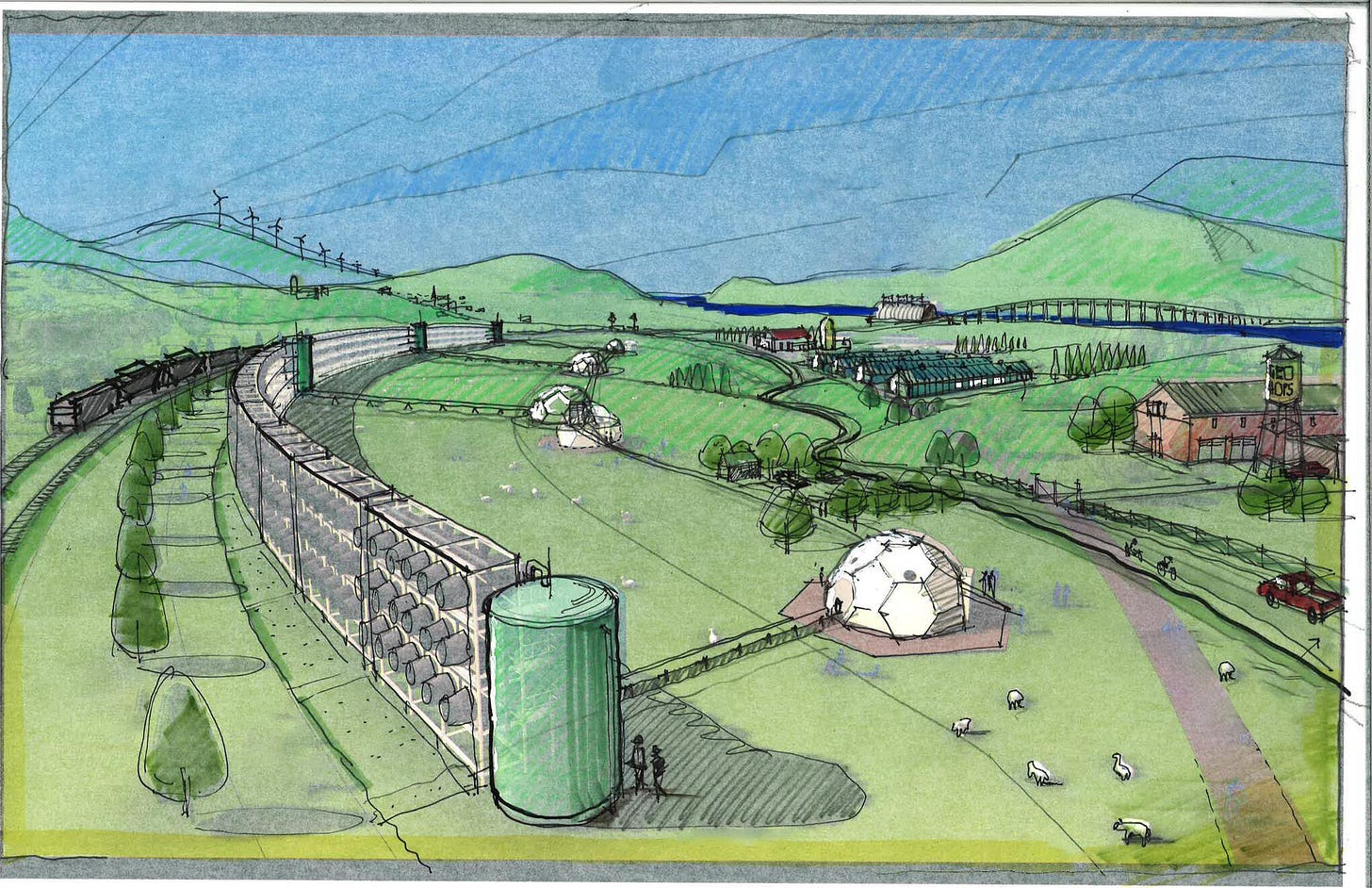A very common argument is that carbon removal will be in short supply, and therefore must be carefully allocated. For example, a recent paper by Grubert & Talati likened CDR to “conventional depletable resources”, to be used scarcely by governments, not by companies. But as I will show in this post, although a number of real-world factors constrain CDR, it is not a finite resource in the way for example land is. The main constraint for CDR isn’t depletable resources, but willingness to pay. If we wanted to, we could deploy orders of magnitude more CDR than we will ever need.
Using CDR today builds future capacity, it does not deplete it.
There are three different questions at play here. Is using CDR now depleting future CDR capacity? Is there a limit to how much CDR we can deploy? And what should the CDR capacity we have built at a certain stage best be used for?
For the first question, the answer is a resounding no. Using CDR today builds future capacity, it does not deplete it. For example, making biochar out of biomass waste that otherwise would have decomposed or been burnt saves zero CDR capacity for future needs. It uses a resource that otherwise would have gone to waste, not eating away from a limited pot of CDR. The same is true for almost all removal solutions aside from forestation. Demand for CDR removes carbon today, and creates the necessary capacity for later usage.
For the second question, we need to divide it into two. What's the theoretical limit for CDR, and what's the practical limit in the near-term? The theoretical limit is very high. We could deploy enormous amounts of CDR if we were willing to pay the costs. For example, imagine large fleets of nuclear power plants just running Direct Air Capture plants on top of geological storage in the desert of Oman, and other sparsely populated places with good storage capabilities. Storage of captured CO₂ underground is not a limiting factor either. In the long term, we have room for thousands of gigatonnes, one estimate puts it to 8000-55 000 Gt worldwide1. More than we will ever need.
What sets the practical limit? Mainly the number of actors that want to pay for removals. The main reason we would fail to deploy meaningful amounts of CDR is if too few entities were compelled to pay for it (in the short to medium-term supply chains, permitting, a trained workforce etc also sets limits, but demand is the main thing that helps solve these hurdles). During the ramp-up phase of CDR, restricting the use of CDR will restrict its deployment.
During the ramp-up phase of CDR, restricting the use of CDR will restrict its deployment.
The third question, what CDR should be used for in the future, does not necessarily need to be answered now. When sufficient CDR capacity has been built, states could restrict the use of CDR for any form of offsetting, and force companies to reduce emissions closer to zero. For example, by limiting the amount of CDR allowed in a cap and trade program like the EU ETS. The point is that paying for CDR today builds the capacity that governments could allocate for whatever is deemed to be the best possible uses tomorrow.
There are caveats to near-term deployment of CDR of course. There is a risk that a belief in cheap CDR tomorrow may deter emission reductions today. Setting separate targets for removals and emission reductions can help ensure that companies and governments do not fail to reduce emissions while they are deploying removals. We should plan as if CDR will be scarce, but build for it to be abundant. (See this paper I co-authored with Carbon Gap on the topic of mitigation deterrence). Any CDR also needs to come with safeguards not to cause ecological or social harm. And energy-hungry CDR must add its own energy, not take it from a grid that is not yet decarbonized.
In any scenario that gets us to our climate targets, CDR needs to grow from hundreds of thousands of tonnes removed per year today to billions of tonnes in a few decades. Both to counterbalance residual emissions, as well as to deal with historic emissions to bring temperatures back down. Any actor that wants to support removals in a sustainable way should be encouraged. That's the only realistic way we are going to get to the target.
Developing a Consistent Database for Regional Geologic CO2 Storage Capacity Worldwide https://www.sciencedirect.com/science/article/pii/S1876610217317976
Also see: Current Status of Global Storage Resources https://www.sciencedirect.com/science/article/pii/S1876610217320684
An Overview of the Status and Challenges of CO2 Storage in Minerals and Geological Formations https://doi.org/10.3389/fclim.2019.00009



I would venture two objections: The first is more of a detail: you write that biomass not converted into biochar would be a "waste". But organic material, wether originating in forest or fields, is not a waste in nature, it is feed for milllions of microorganisms. It also comes with nutrients which are all but lost in the biochar process. So I would argue that large scale biochar applications is something that needs to be considered carefully. .The second objection is about the energy need. You write. "And energy-hungry CDR must add its own energy, not take it from a grid that is not yet decarbonized. " Already that is a tall order, but even when CDR is made with decarbonized energy it is a huge problem if it is energy-hungry as the future will be short in affordable energy.